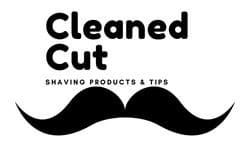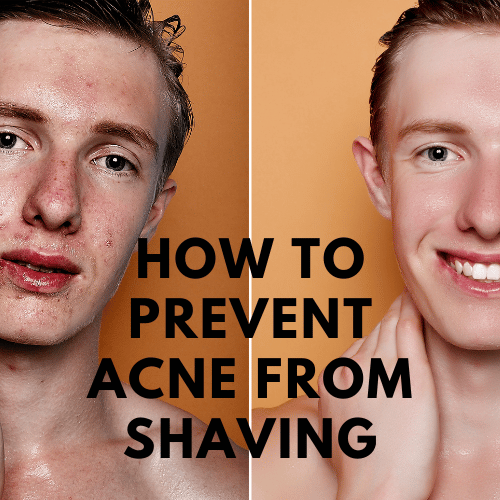Acne is one of the most common skin problems in teens and young adults. It’s also annoying and embarrassing. Many people wonder how to prevent acne from shaving and whether it’s worth investing in expensive acne products. Fortunately, there are several small but effective steps you can take to keep your skin clear. Keep reading to learn more about preventing shaving-induced acne, as well as tips for keeping your skin clear when you do need to shave.
Acne vs. Razor Bumps
Acne is a common skin condition that occurs when pores become clogged with oil, dead skin cells, and bacteria. This can lead to the formation of whiteheads, blackheads, and pimples. Razor bumps, on the other hand, are caused by ingrown hairs that irritate the hair follicle, resulting in redness and swelling.
While both acne and razor bumps can present as red, painful bumps, they have different causes and require different approaches for prevention and treatment.
How Shaving Can Cause Acne
Shaving can contribute to acne in several ways:
- Dirty or old razor blades – Old, dull blades can harbor bacteria, which can then infect your skin as you shave.
- Irritating shaving products – Some shaving creams, gels, and aftershaves contain ingredients that can irritate the skin or clog pores, leading to breakouts.
- Poor shaving techniques – Shaving too aggressively, against the grain, or without proper skin preparation can cause irritation and inflammation, worsening acne.
Understanding these factors is crucial to preventing acne from shaving and achieving a smooth, comfortable shave.
Shaving Techniques: Tips for a Comfortable, Acne-Free Shave
The way you shave plays a significant role in preventing acne from shaving. Keep these tips in mind for a smooth and comfortable experience:
- Choose the Right Razor
Opt for a clean, sharp razor with closely spaced blades. Multi-blade razors can help reduce irritation by distributing pressure evenly across the skin. Make sure you replace your razor blades regularly, ideally after every 5 to 7 shaves.
- Use Acne-Friendly Shaving Products
Select shaving creams, gels, and aftershaves designed for sensitive or acne-prone skin. Look for products that are fragrance-free, non-comedogenic, and contain acne-fighting ingredients such as salicylic acid or tea tree oil.
- Shave with the Grain
Shaving in the direction of your hair growth, rather than against it, reduces the risk of irritation, razor burn, and ingrown hairs. This technique may not result in the closest shave, but it’s essential for preventing acne from shaving.
- Be Gentle and Take Your Time
Don’t rush while shaving – move slowly and use a light touch to avoid irritation and inflammation. Ensure your razor is sharp and clean (consider a razor blade sharpener), and rinse it thoroughly between strokes to remove hair, shaving cream, and dead skin cells.
- Avoid Shaving Over Active Acne
If possible, avoid shaving directly over pimples to prevent further irritation and inflammation. If you must shave over acne, do so gently and with minimal pressure to reduce the risk of breaking the skin and causing scarring.
Post-Shave: Soothing and Protecting Your Skin
After shaving, it’s essential to soothe and protect your skin to prevent irritation and acne from shaving.
- Rinse with Cool Water
Rinse your face with cool water after shaving to close your pores and remove any remaining hair or shaving cream. This helps prevent dirt and bacteria from entering your pores and causing breakouts.
- Apply Aftershave
Choose an alcohol-free aftershave that contains soothing, antibacterial ingredients such as aloe vera, witch hazel, or tea tree oil. This will help calm your skin and prevent acne-causing bacteria from causing breakouts.
- Moisturize
Finish your post-shave routine by applying a lightweight, non-comedogenic moisturizer to keep your skin hydrated and protected.
Keep your skin hydrated
If you have clear skin, the chances of getting acne from shaving are slim. That said, keeping your skin hydrated is one of the best ways to prevent acne. We all know that dry skin is prone to getting acne. So, the best way to prevent shaving-induced acne is to keep your skin hydrated.
You don’t necessarily have to use face cream or an expensive moisturizer; you can easily accomplish this by drinking lots of water and avoiding rinsing your face with hot water. Water and oil are two natural enemies. If you have oily skin, you won’t need to use a moisturizer because your skin naturally produces its own oil. But if you have acne-prone skin or dry skin, it’s essential to keep it hydrated.
Try an apple cider vinegar mask
Apple cider vinegar has been proven to be an effective treatment for acne. It has antibacterial properties that kill harmful bacteria in the skin, making your skin less oily and acne-prone. Therefore, you can easily prevent shaving acne by masking your skin with apple cider vinegar. You can either purchase a mask already containing ACV, or make your own DIY mask.
You can make a mask by mixing half a cup of apple cider vinegar with a cup of water (the mixture will be thin). Optionally, you can add baking soda and even honey or Aloe Vera gel to the mixture. Apply the mixture to your face and allow it to sit for 15 minutes. After this time, rinse the mixture cleanly off your face.
Shave before you shower
If you’re prone to acne after shaving, try not to shave after you shower. Taking a warm shower will cause the pores on your face to open. Shaving with open pores can cause bacteria to enter and cause acne. If you get a lot of acne from shaving and usually shave after your shower, it might be a good idea to try shaving prior to your shower.
Don’t shave dry or with dull blades
When you shave, it’s important to make sure that you do it with the right technique and the right tool. Using a dull blade will only result in razor burns and red skin. If you want to prevent acne from shaving, you need to make sure that you don’t shave dry or with a dull blade. Keep your blades sharp with a razor blade sharpener.
Shaving dry increases irritation and increases the likelihood that you suffer nicks and cuts. These nicks and cuts open you up to the possibility of more acne and even infection. Always opt for shaving with a quality cream or soap, and follow up with a good aftershave.
Keep your skin clean
As mentioned previously, warm water will cause your pores to open up, leaving them exposed for dirt and bacteria to enter. Be sure to begin and end your shave with a clean face.
Facial scrubs are a popular choice to cleanse your skin before shaving. They not only clean but also exfoliate your skin.
Using an oil-absorbing sheet
An oil-absorbing sheet is a great tool for preventing acne from shaving. These sheets are made using bamboo and charcoal to cleanse your skin naturally and absorb excess oil. Oil-absorbing sheets can be used before shaving to remove oils that might contribute to acne, or they can be used throughout the day to control face oils.
Additional Tips for Preventing Acne from Shaving
In addition to the steps mentioned above, consider the following tips to further reduce your risk of acne from shaving:
- Shave less frequently – Giving your skin a break between shaves can help reduce irritation and breakouts.
- Keep your razor clean and dry – Store your razor in a well-ventilated area to prevent bacterial growth and ensure it dries properly between uses.
- Avoid touching your face – Touching your face can transfer bacteria, dirt, and oil to your skin, worsening acne. Keep your hands clean and avoid touching your face as much as possible.
Recommended Products
Pre-Shave Exfoliating Scrub
A pre-shave exfoliating scrub helps remove dead skin cells, unclog pores, and prevent ingrown hairs. Look for a gentle scrub with ingredients like salicylic acid or glycolic acid that effectively exfoliate without causing irritation.
Safety Razor
Consider switching to a safety razor, which has a single sharp blade, instead of using multi-blade cartridges. Safety razors provide a closer shave and reduce the chances of irritation and ingrown hairs.
Shave Cream for Sensitive Skin
Opt for a shave cream specifically formulated for sensitive skin. These creams usually contain soothing ingredients like aloe vera or chamomile, which help minimize razor burn and redness.
Alcohol-Free Aftershave Balm
An alcohol-free aftershave balm helps calm and moisturize the skin after shaving. Look for a product that contains ingredients like witch hazel, tea tree oil, or jojoba oil to soothe any irritation and keep the skin hydrated.
Antibacterial Face Wash
Incorporate an antibacterial face wash into your skincare routine to cleanse the skin thoroughly and prevent acne-causing bacteria from thriving. Choose a gentle formula that won’t strip the skin’s natural moisture.
Sunscreen with SPF
Protect your skin from harmful UV rays by applying a broad-spectrum sunscreen with at least SPF 30. Look for an oil-free, non-comedogenic formula that won’t exacerbate acne.
Conclusion
Not only can acne be embarrassing, but it can also be painful. Shaving can also be painful if you use a dull razor or if you shave dry. Thankfully, it’s possible to prevent acne from shaving, and there are many steps you can take to keep your skin clear.
Keeping your face moisturized, and clean, and controlling oils is key to being acne free. When you shave, any present bacteria gets spread across your skin. Cleansing and exfoliating your skin prior to shaving can keep the bacteria to a minimum. Also, following up on your shave with aftershave is just as important. Lastly, always use a clean and sharp razor when shaving.



